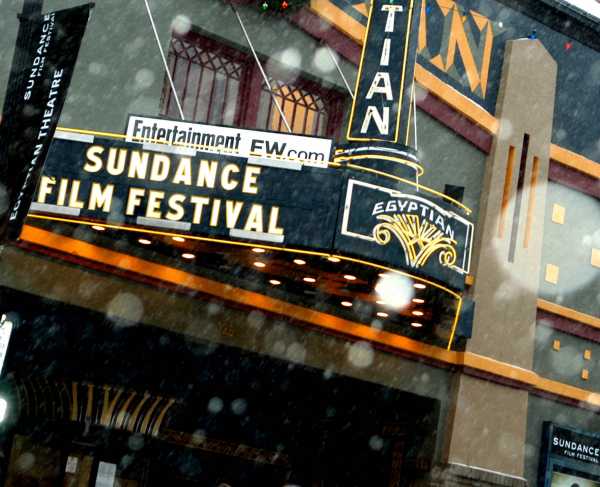
What do Eighth Grade, Sorry to Bother You, Blindspotting, Will You Be My Neighbor? and RBG all have in common? They’re all movies that made waves last year — and all five also premiered last January at the Sundance Film Festival, the most prestigious film festival in the United States and one of the most important pieces of the movie industry puzzle.
Every year in mid-January, a mass migration to Utah happens: Critics, filmmakers, industry people, and celebrity hunters head to the mountainous ski resort town Park City, about 30 miles from Salt Lake City, where the annual festival — a 10-day marathon of screenings, panels, talks, events, parties, and more — takes place.
Sundance is a lot of things: an exhibition for the most exciting independently produced films from the US and around the world; an early predictor of the year’s movie trends; a networking hub for filmmakers and other talent looking to break into the movie business; a forum for discussing issues and groundbreaking technologies that affect film and media; a place to spot celebrities in puffy jackets and furry boots; and a palate cleanser after the hectic fall movie season. A record 125,000 people attended the festival in 2018 — a huge increase over 2017’s 71,600 attendees — which makes it by far the largest film festival in the United States.
But for the vast majority of people who don’t spend the year breathlessly tracking trends in cinema, the idea of “Sundance” is a bit hazy: What is it? Where did it come from? Why does it matter?
Sundance straddles two worlds: the big-name, award-winning movie world and the scrappy indie film world. So paying attention to the festival is a good way to catch the first inklings of Oscar buzz and to get a sense of the issues and topics that are motivating filmmakers and audiences.
Put simply, for people who love movies, Sundance is one of the most exciting events of the year. There’s the feeling in the air that any movie could be a breakout hit, any talent could become the next star. Anything can happen in Park City.
Sundance helps independent films find an audience, both at the festival and after it
Films selected to play at Sundance must be independently produced, and they are usually available for acquisition at the festival.
Put simply, an independent film is a movie that’s produced and funded outside the major film studio system. Whereas big blockbusters and major theatrical releases are often created, funded, and distributed by studios — think Paramount, Sony, Disney, and Warner Bros. — independent films get their start with independent production companies or filmmakers who get enough investment (or invest their own capital) to get the film off the ground.
But producing the film is only half the battle; it still needs to get in front of an audience, and that’s where festivals like Sundance and distributors enter the picture. Distributors attend the festival in order to decide whether to acquire a film to play in theaters in the future and/or stream on platforms like Netflix, Amazon, and HBO Go. When an independent film gets selected for Sundance, its chances of being bought by the distribution arm of a studio (like Lionsgate or Fox Searchlight) or an independent distributor (like A24 or Broad Green) go way up.
In recent years, Netflix and Amazon Studios have had deep pockets for acquisition at Sundance. But the companies have also been turning to producing their own original content — and neither acquired any films there in 2018. Industry insiders will be watching to see if they repeat that trend in 2019.
Some Sundance films are acquired before the festival even starts, but many films that play at the festival are hoping to generate enough notice and buzz to get sold — hopefully to a distributor that can put enough marketing dollars behind them to translate to box office returns and even awards season buzz.
But first, a film has to make it into Sundance. Filmmakers must submit their work ahead of time to the festival’s panel of programmers for consideration, and if they’re lucky, their film will be selected to play at the festival to press and industry as well as ticketed audience members (usually in separate screenings).
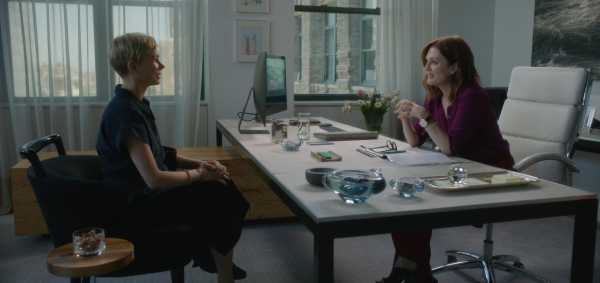
The chances of being selected are slim. In 2018, 3,901 feature-length films were submitted for consideration (along with 8,740 short films). According to Sundance, 1,799 of the feature film submissions were from the US, and 2,102 were international. Ultimately, only 110 feature films were selected to play at the festival, 100 of which were world premieres (meaning they hadn’t been shown anywhere else before).
Sundance isn’t just about buying and selling movies, though
Since its beginning, the festival has also featured a competition, with a jury of experienced filmmakers, festival directors, and experts awarding prizes to movies playing at the festival. (
But there’s more to Sundance than buying, selling, and grabbing awards. The festival also programs movies — and sometimes non-movies — that are there not to compete, but rather to cater to the movie lovers who attend. For instance, in 2019 the festival is hosting a special screening commemorating the 20th anniversary of The Blair Witch Project, which premiered at Sundance in 1999. There are special events (which in 2019 include several premieres for the third season of IFC’s show Documentary Now!) and screenings of films that premiered at other festivals. And there are musical performances, presentations, panel discussions, and star-studded conversations, most of which are aimed at filmmakers and others in the industry.
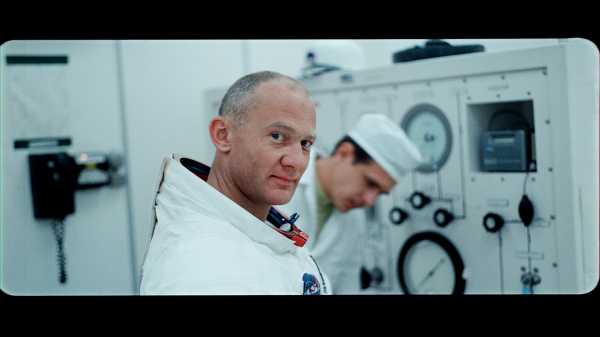
Lots of other things happen at Sundance outside the theater, which are easy to spot while walking up and down Park City’s Main Street. Brands like Airbnb, Canon, and Stella Artois sponsor the festival and set up shop in locations all over town, with showrooms, stages, and spots for festivalgoers to sit and have a cup of coffee. Journalists interview filmmakers and review films. Celebrities and filmmakers pose for pictures on the red carpet. And there are parties for everything — to celebrate film premieres, achievements, brands, and production companies — most of which are only open to invited guests (though a contingent of people always show up hoping to sneak in and spot celebrities). You could go skiing, too, but who has the time?
Sundance started as a way to promote American independent film
The Sundance Film Festival is actually just one program put on by the Sundance Institute, which also sponsors and supports festival events and programs to bolster independent film throughout the year. But the festival is by far the Sundance Institute’s best-known program, so the name “Sundance” is usually synonymous with the big event.
The institute maintains a fascinating timeline about the festival’s history, which is a great source of information about its long and storied history.
But here is the tl;dr: Sundance was founded in 1978. At the time, it was held in Salt Lake City and called the Utah/US Film Festival. The idea was to attract filmmakers to Utah, and to promote American independent filmmaking. The first chair of the festival was Robert Redford — who generally gets credit for founding Sundance — and he remains involved with the festival to this day, speaking during its opening press conference and frequently appearing in other capacities.
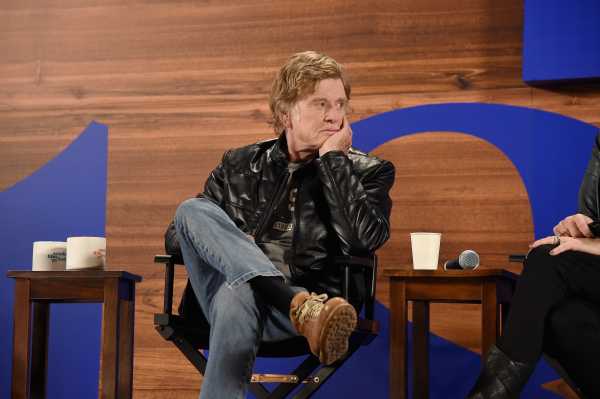
Over time, the festival has experienced a number of changes. The biggest came in 1981, when the festival moved from Salt Lake City to Park City and shifted its dates from summer to January. Then in 1984, the Sundance Institute — which had been founded separately — took over producing the festival, which by then was called the US Film Festival.
Finally, in 1991, the event was rebranded as the Sundance Film Festival, named for Redford’s character in the 1969 film Butch Cassidy and the Sundance Kid. Since then, most of the changes have been programmatic: the addition of a shorts program, new interest in technologies like digital and virtual reality, and the launch of the World Cinema Competition.
The festival’s profile continued to rise thanks to some major films that got their start at Sundance, like Steven Soderbergh’s Sex, Lies, and Videotape (1989), which would go on to win the prestigious Palme d’Or at Cannes; Wes Anderson’s 13-minute short Bottle Rocket (1993), which would eventually be expanded into his first feature with the support of the institute; and Sophia Coppola’s The Virgin Suicides (2000).
Sundance tells observers a lot about what’s next in movies
Sundance happens before the year’s Oscar season really gets going — in fact, the nominations for the Oscars (which, confusingly, honor films from the previous year) are often announced just before or during the festival, and the awards aren’t given until the following month.
But there’s still the possibility of the following year’s Oscar contenders cropping up at Sundance, and awards prognosticators are on the lookout. In 2017, the raves for Call Me by Your Name, starring Armie Hammer and Timothée Chalamet, made it clear almost instantly that we’d still be talking about it when the Oscars rolled around — and indeed, the film nabbed three Oscar nominations. In 2015, Brooklyn premiered at Sundance and was eventually nominated for Best Picture in 2016. Awards other than the Oscars matter too, of course, and many Sundance movies also go on to win Golden Globes, Independent Spirit Awards, and BAFTAs.
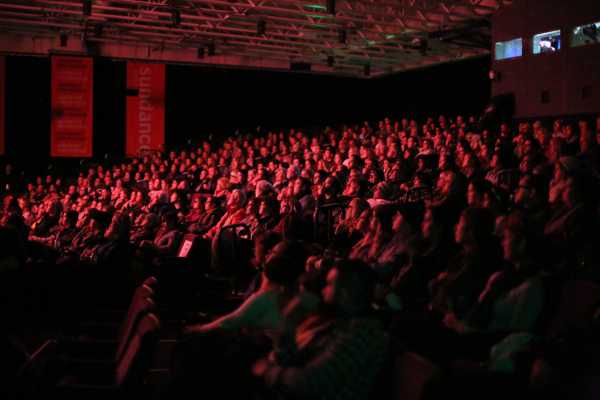
Sometimes awards chatter can backfire, though. At Sundance 2016, Nate Parker’s film The Birth of a Nation generated massive buzz after its premiere, which came just a week after the #OscarsSoWhite controversy stirred up heated discussions about diversity in Hollywood. The film sparked a bidding war and was eventually purchased by Fox Searchlight for $17.5 million, the highest price ever paid for a finished film in the history of festivals. There was major awards buzz for the film as well, especially for Parker, its writer, director, and star.
But in the months between Sundance and the film’s premiere, a rape scandal broke around Parker, and though the film still played at the prestigious Toronto Film Festival later that fall, it couldn’t outrun the bad mojo. The film’s gross box office total didn’t quite make it to $16 million, $1.5 million less than its selling price — a loss for Fox Searchlight, which surely expected to have a hit on its hands when it shelled out at Sundance.
Movies aren’t just about the awards, though, and Sundance reflects that as well. It’s a great place to spot eventual box office winners (such as 2000’s Little Miss Sunshine) and new talent. Major directors like Damien Chazelle (La La Land), Paul Thomas Anderson (Phantom Thread), Darren Aronofsky (Mother!), and Richard Linklater (Last Flag Flying) all got their start at Sundance. The Coen brothers’ first film, Blood Simple, premiered at Sundance in 1985 and wound up winning the Grand Jury Prize, catapulting the duo toward fame.
A Sundance premiere can mean big things for actors, too: Half Nelson, for instance, which premiered at Sundance in 2006, effectively launched Ryan Gosling’s adult acting career. Behind-the-scenes names — documentarians, musicians, editors — also have the chance to get spotted at Sundance. No matter the role, it’s one of the most important places for filmmakers to get noticed and to network.
Sundance is trying to lead the pack in diversifying the film industry, too
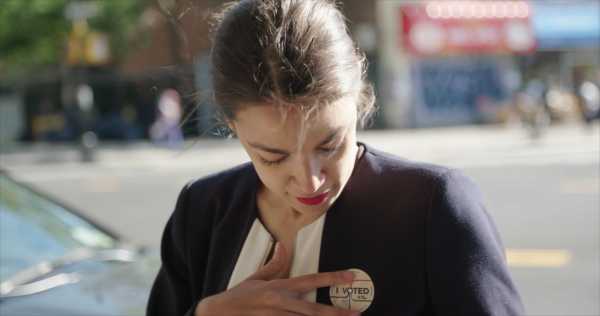
Perhaps acknowledging that indie film can be a boys’ club — see the names above — Sundance has also worked in recent years to promote the work of women in the film industry with its Women at Sundance initiative. More than half of the 16 films in the US Dramatic competition in 2019 were helmed by women, compared to 31 percent in the same competition last year. Of the 112 features selected for the 2019 festival, 40 percent are directed or co-directed by a woman. That outpaces the broader industry substantially; in 2018, of the 112 directors behind the year’s 100 top-grossing films in the US, only four were women.
Sundance also makes a concerted effort to elevate the voices of other minority groups. Of this year’s 112 films, 36 percent were made by a person of color, and 13 percent by someone who identifies as LGBTQ. Compare those stats to some from 2018, when 16 of the 112 directors behind the year’s 100 top-grossing films in the US were black, and 4 were of Asian descent. (There are no major statistics on how many self-identifying LGBTQ people direct films, though GLAAD studies on-screen representation.)
Since Sundance can act like a clearinghouse for the best independent filmmakers and talent, an increased percentage of women-led and -produced films at Sundance could help increase diversity in the broader industry.
The Sundance Institute sponsors other initiatives aimed at increasing diversity in several areas in the industry, as well. One of the major initiatives in 2019, a new press inclusion initiative, was created to boost the numbers of critics from underrepresented communities at the festival. (The Toronto International Film Festival launched a similar initiative at that festival last September.)
Why is this necessary? A study conducted by the USC Annenberg Inclusion Initiative and published earlier this year found that the most published film critics are overwhelmingly white and male; additionally, many critics from underrepresented communities work as freelance writers, and covering a festival like Sundance poses a financial hardship, even as it can substantially boost a career.
So for 2019, Sundance allocated a minimum of 20 percent of top-tier press passes to critics who are part of the initiative, developed programming to help new critics navigate the festival, and provided stipends to defray travel and lodging costs for over 50 freelance critics and journalists. (
Sundance’s emphasis on always looking forward to the future of film is what makes it unique. And at the end of the day — once the bidding wars and awards chatter and branding exercises have died down — the festival is vitally important for people who love good movies. Everything from documentaries like O.J.: Made in America to innovative horror films like The Witch can appear to shake up the rest of the year in film. And while experienced cinephiles and critics have a sense of what to expect when they arrive in Park City, there’s always the chance that something new and fresh will appear out of nowhere and take the place by storm.
Sourse: vox.com






